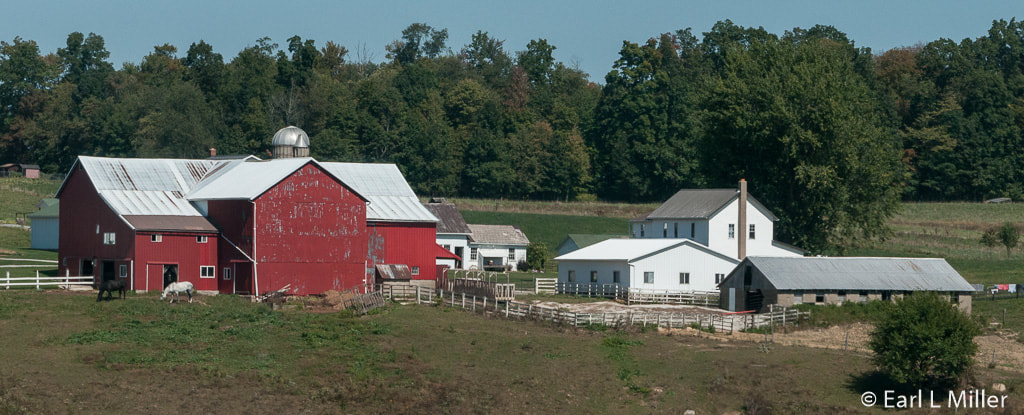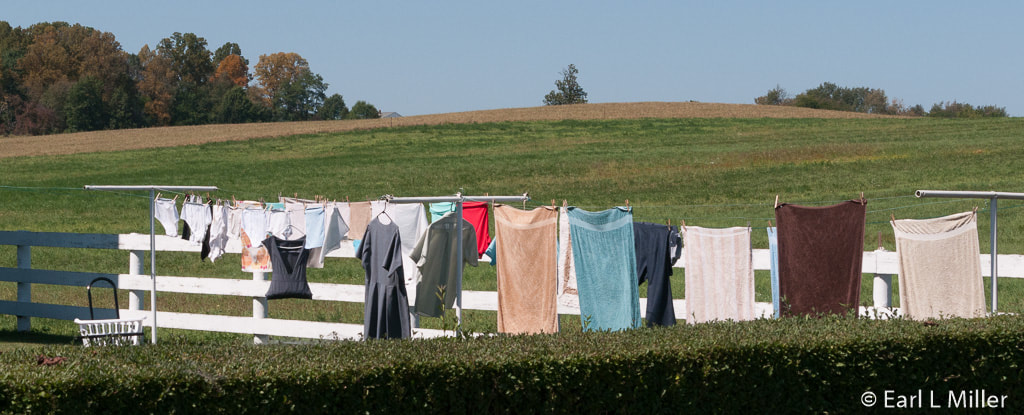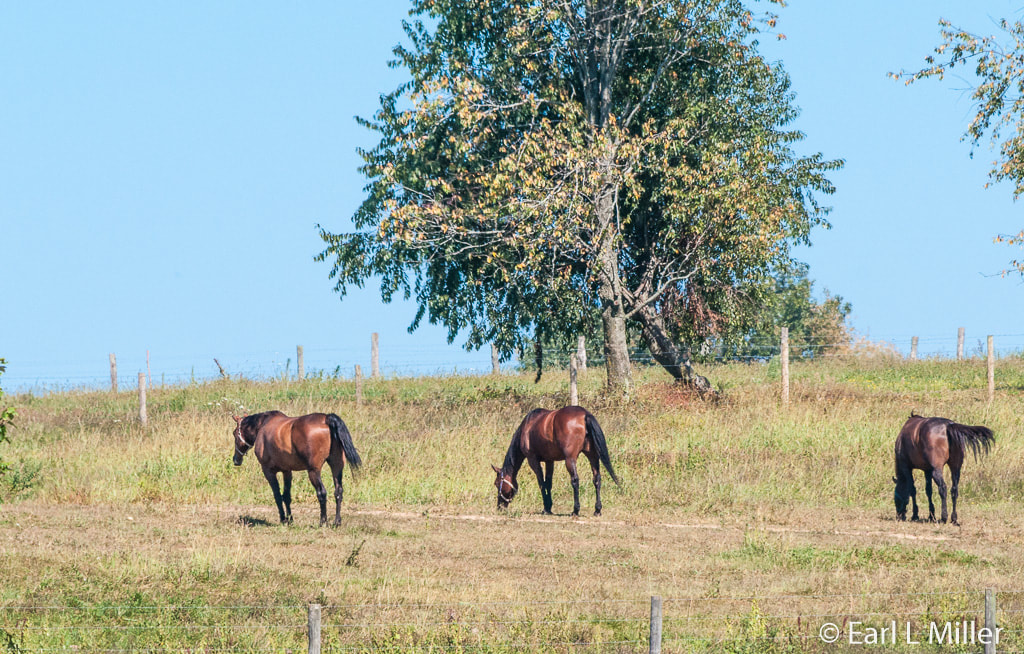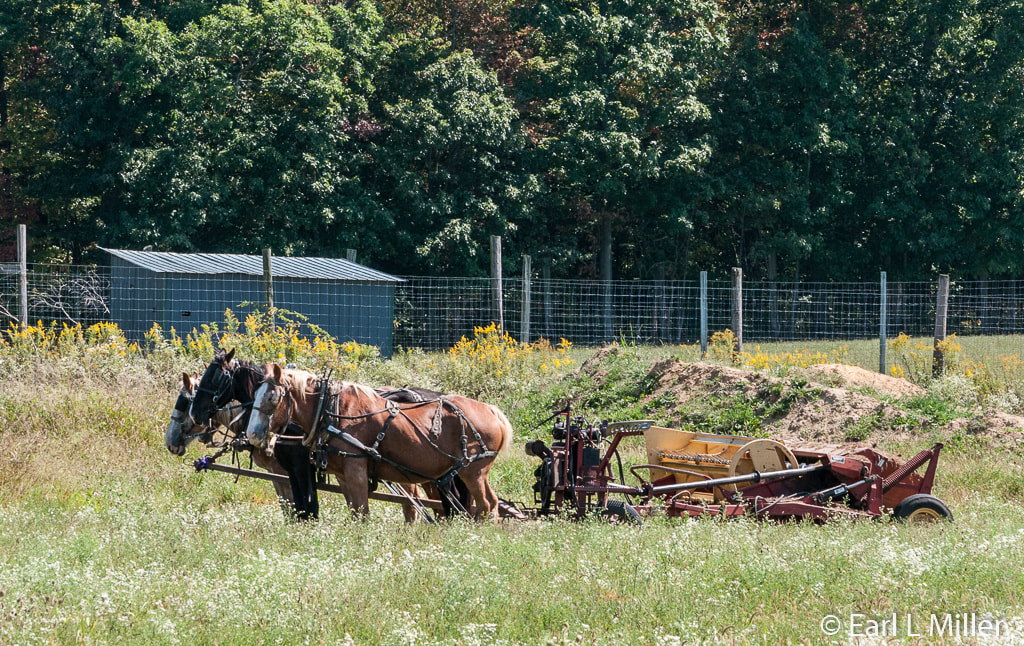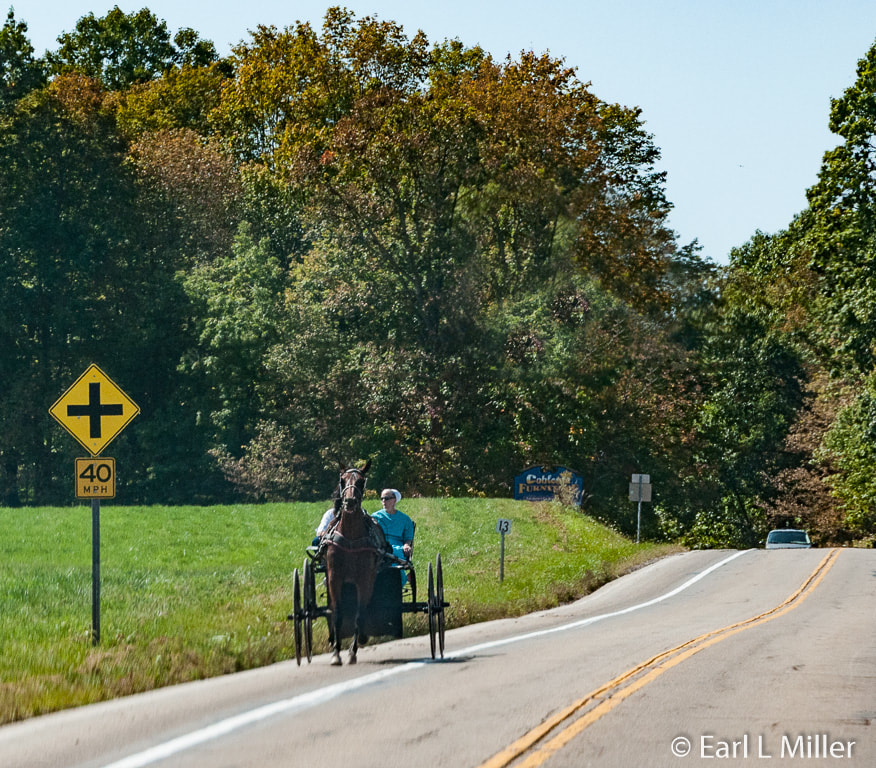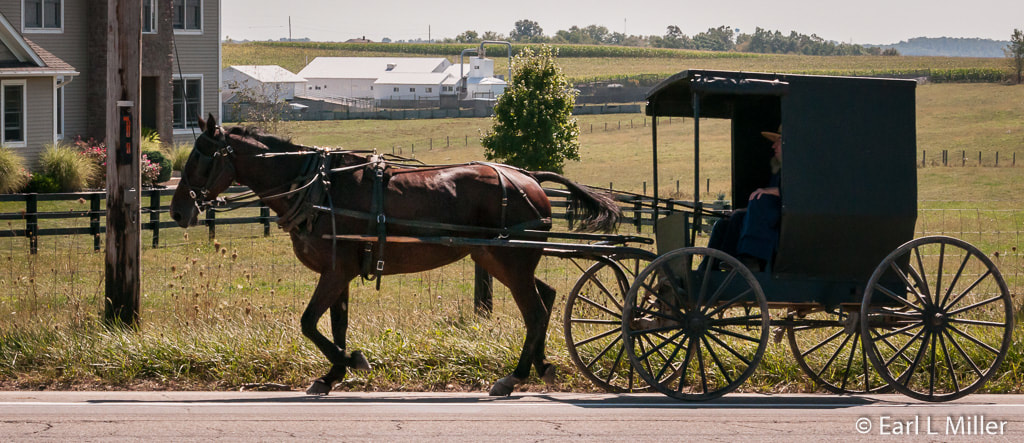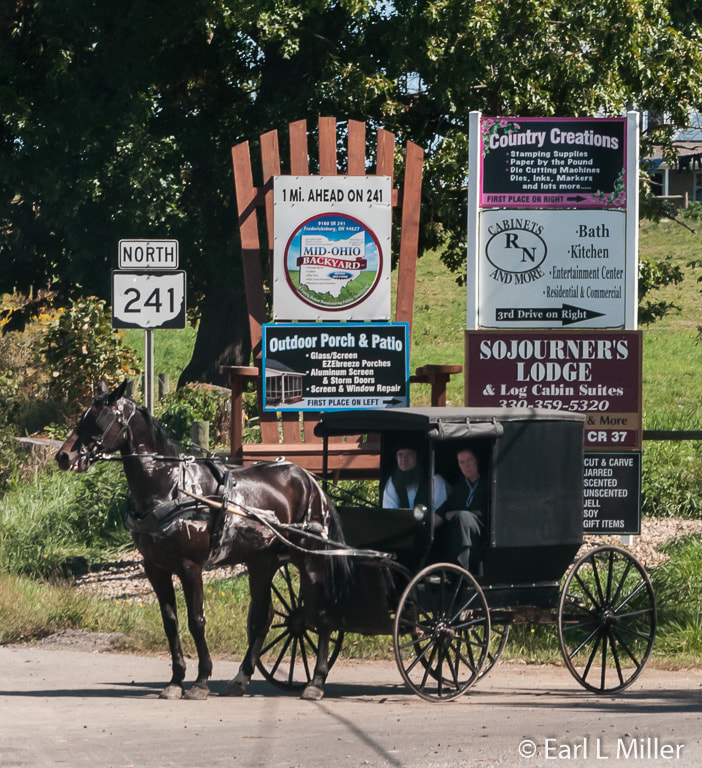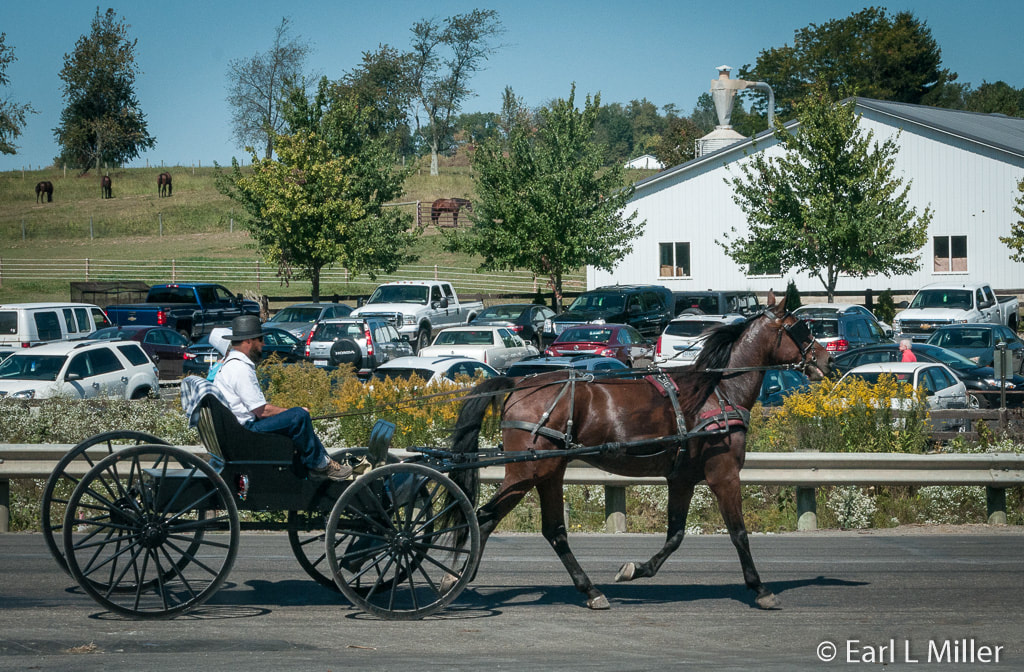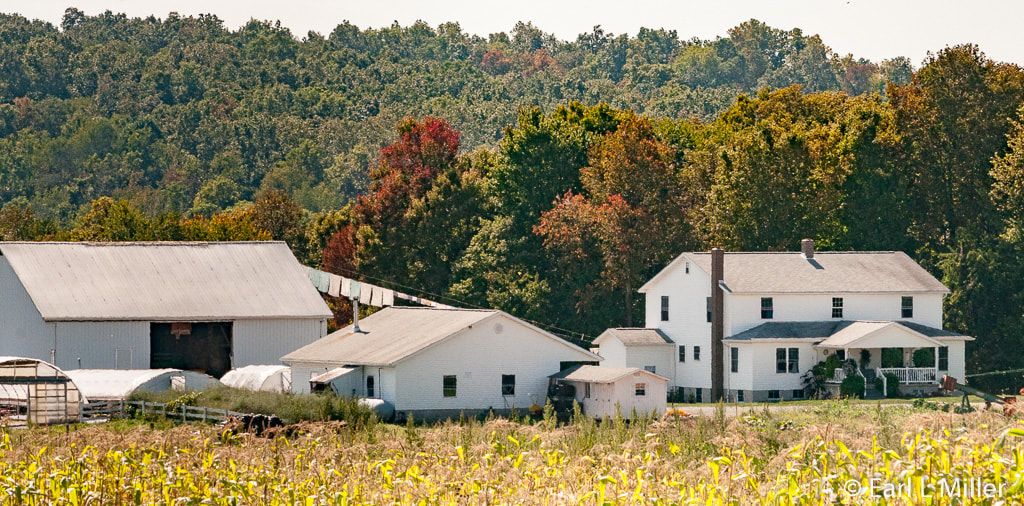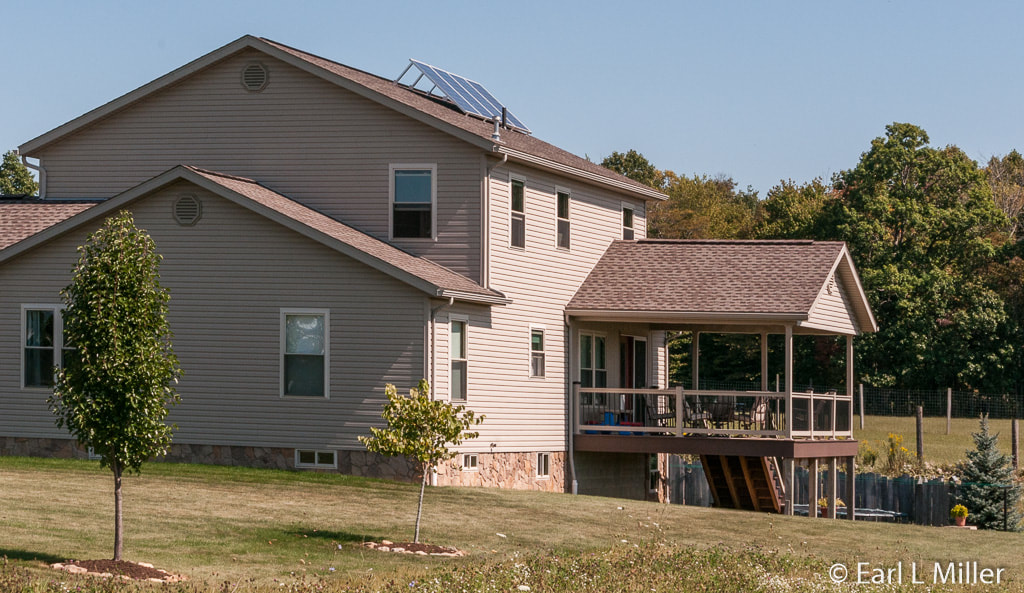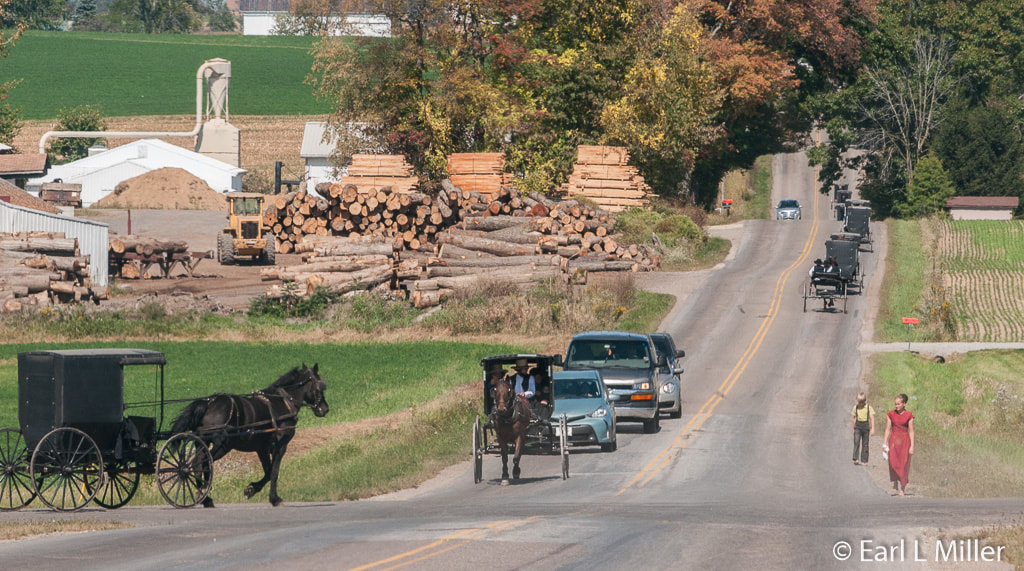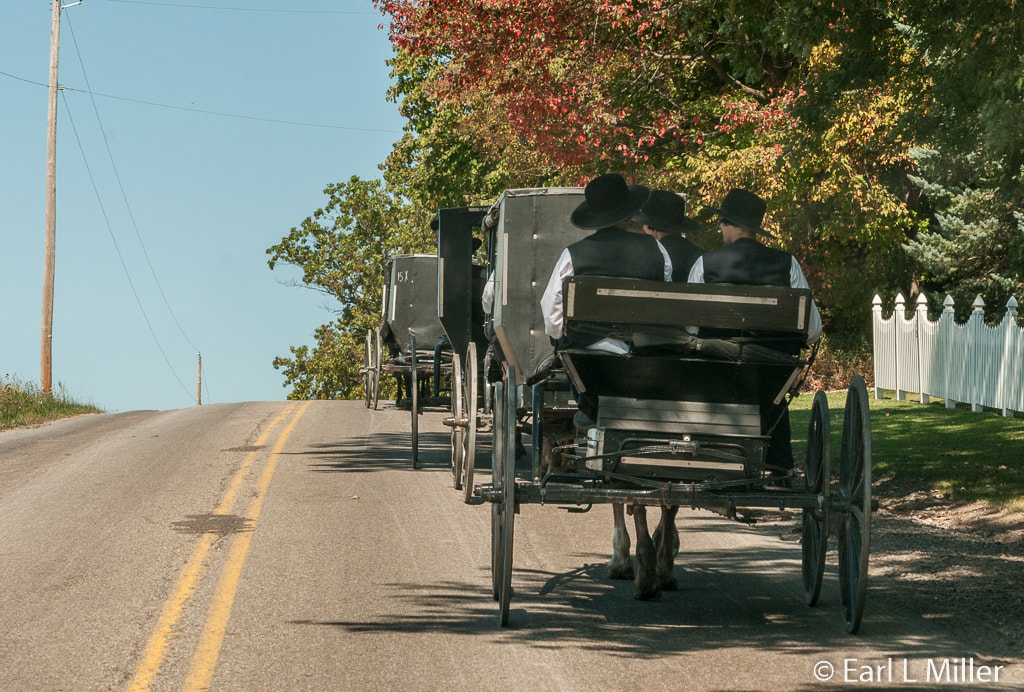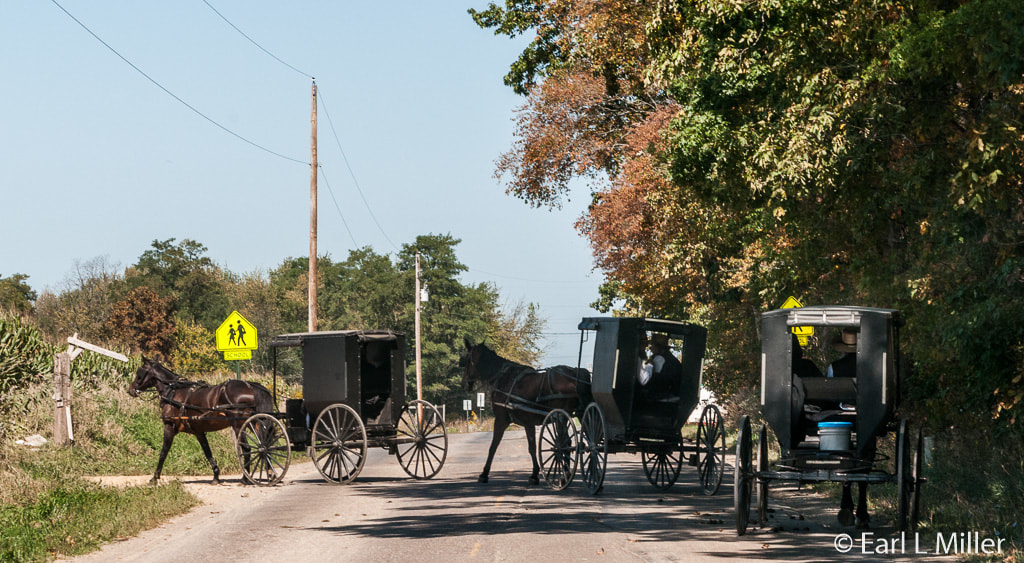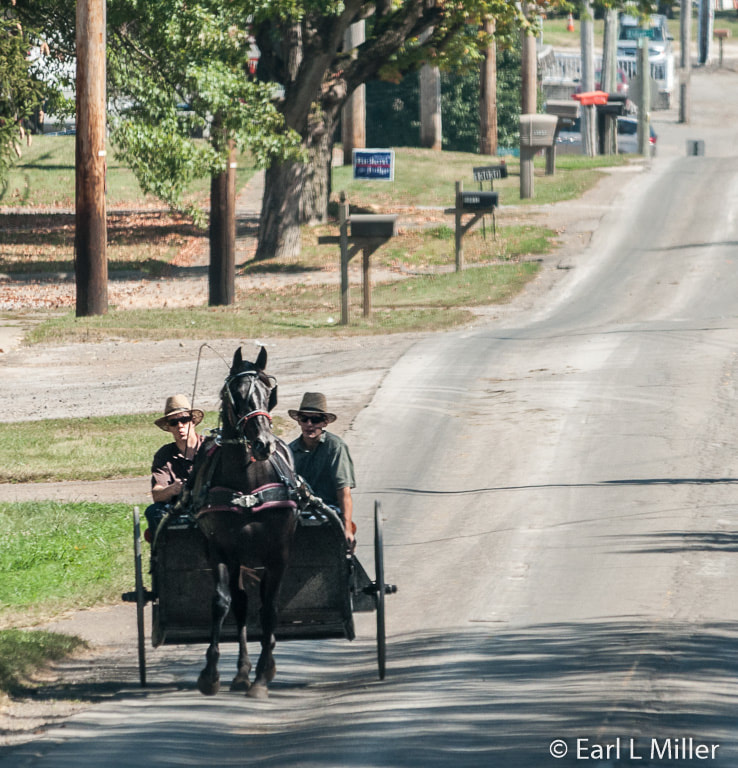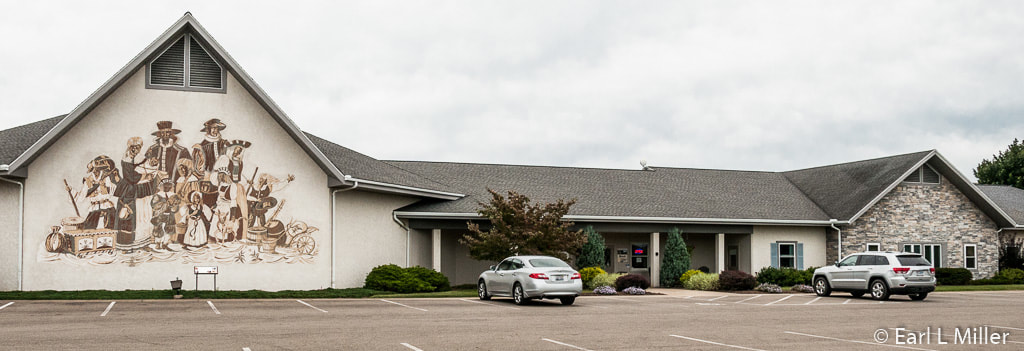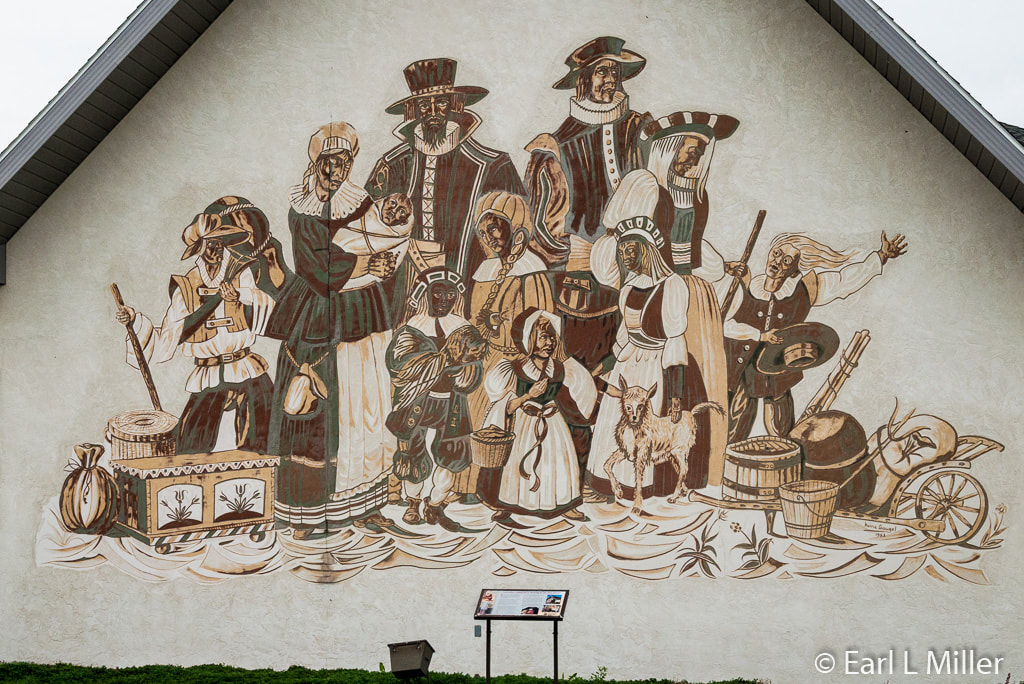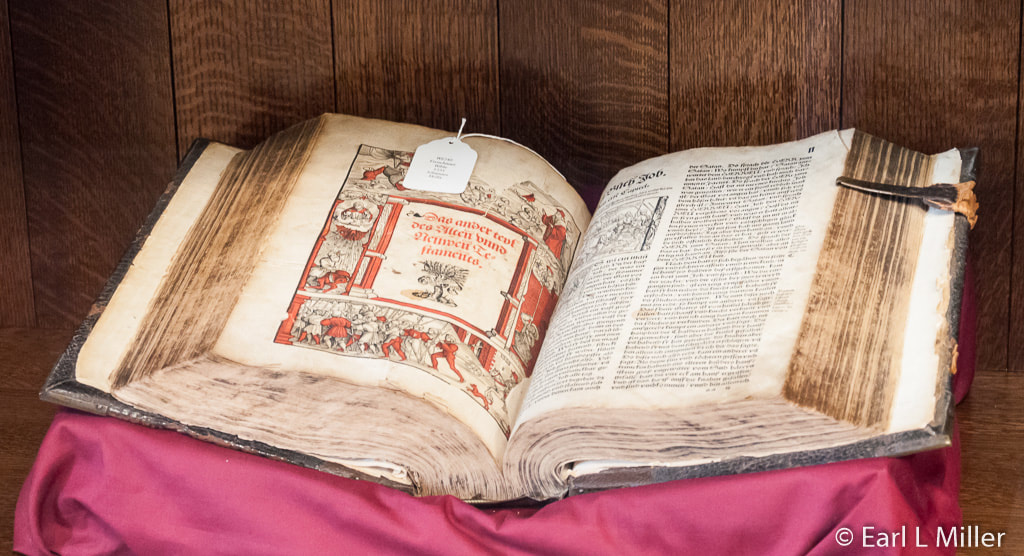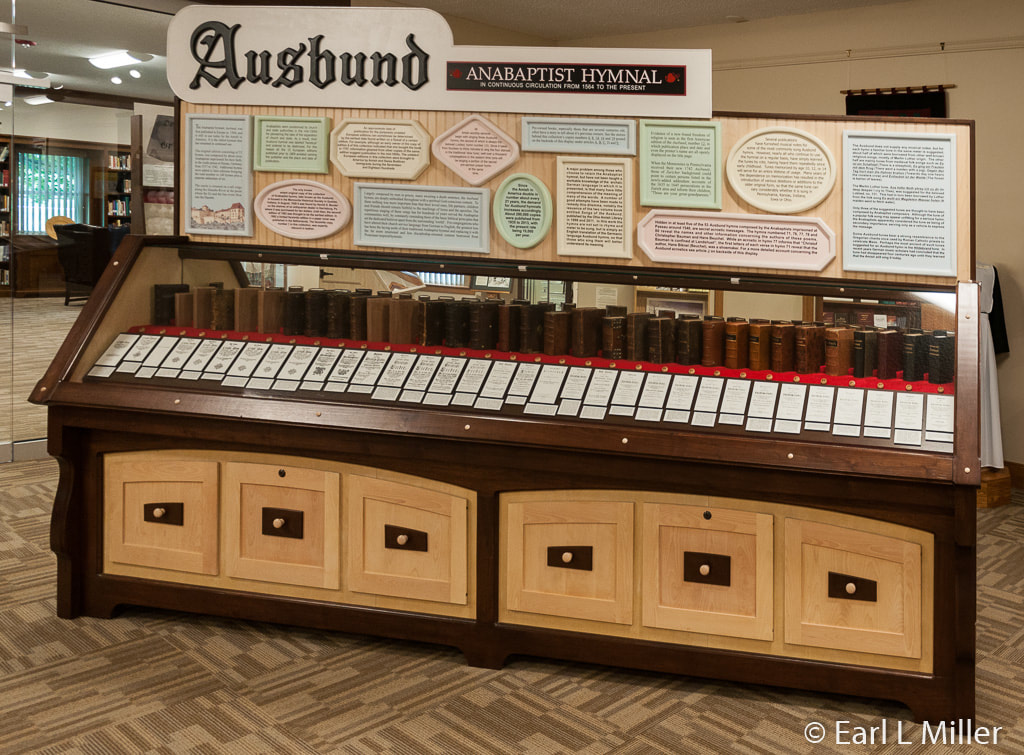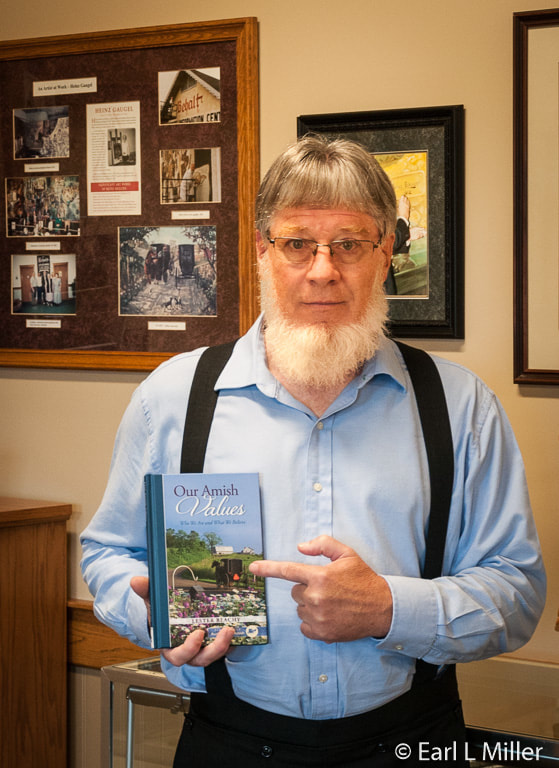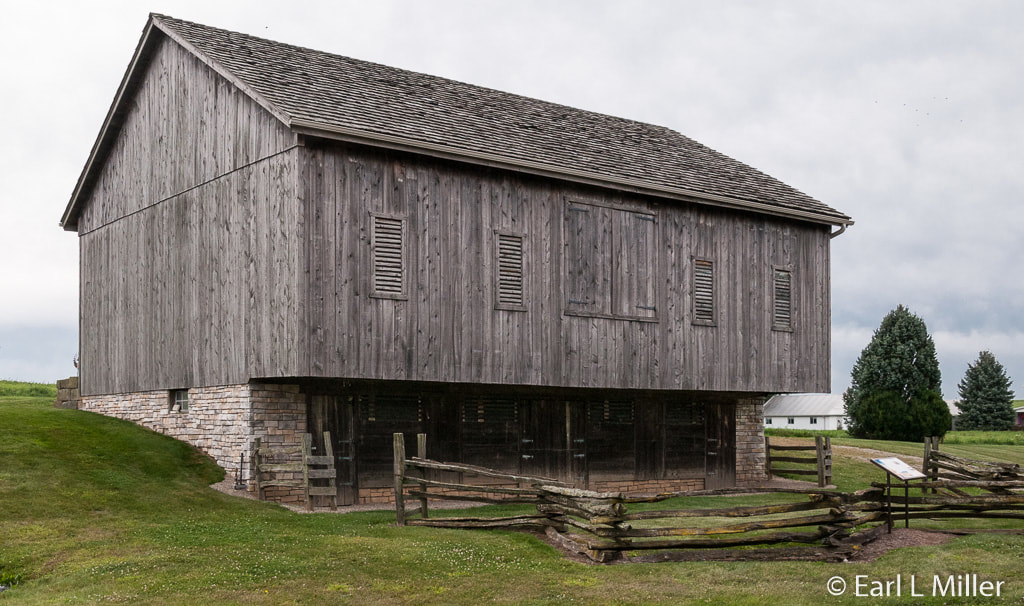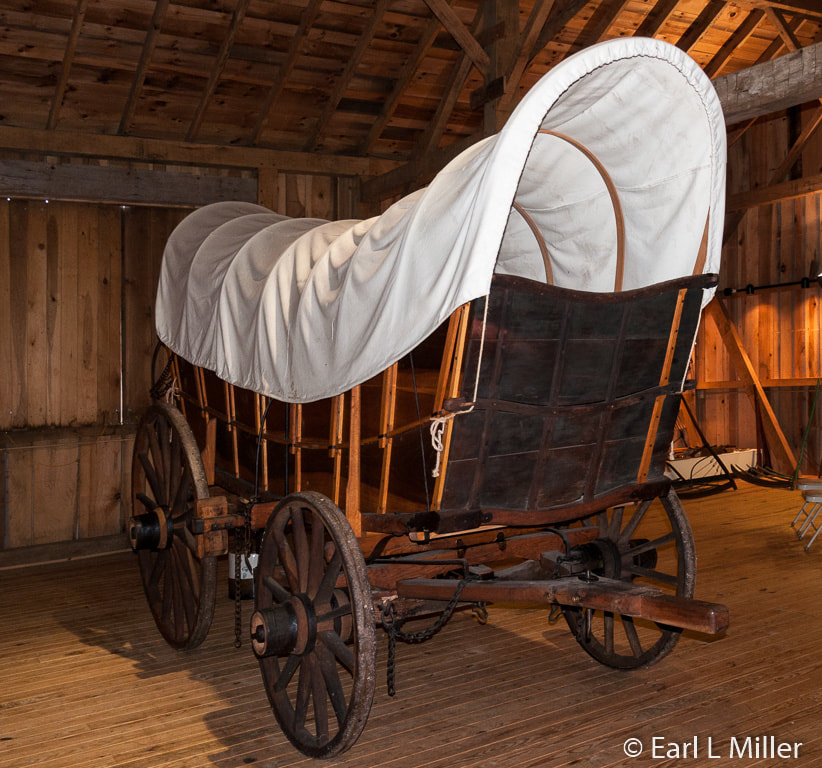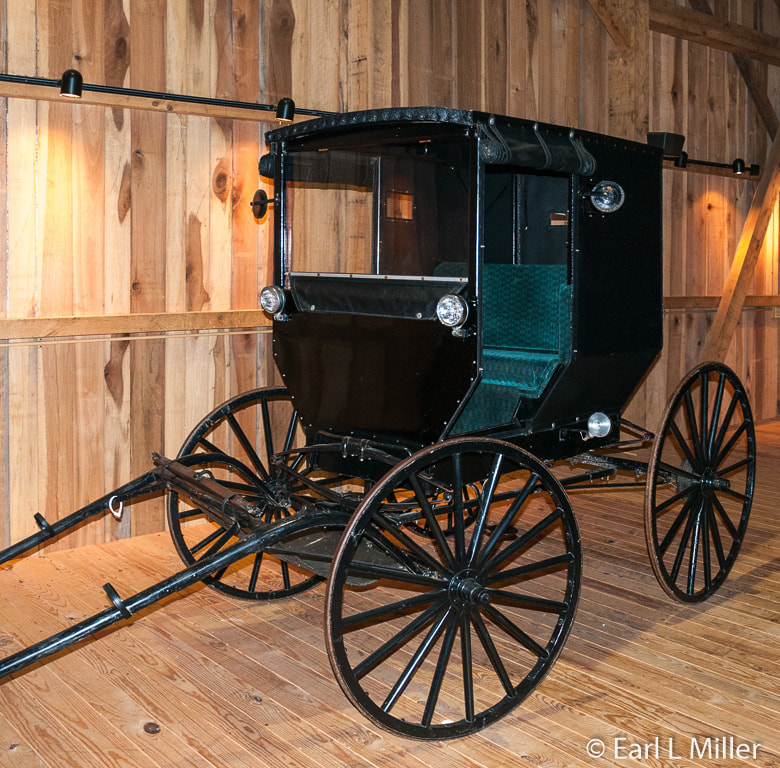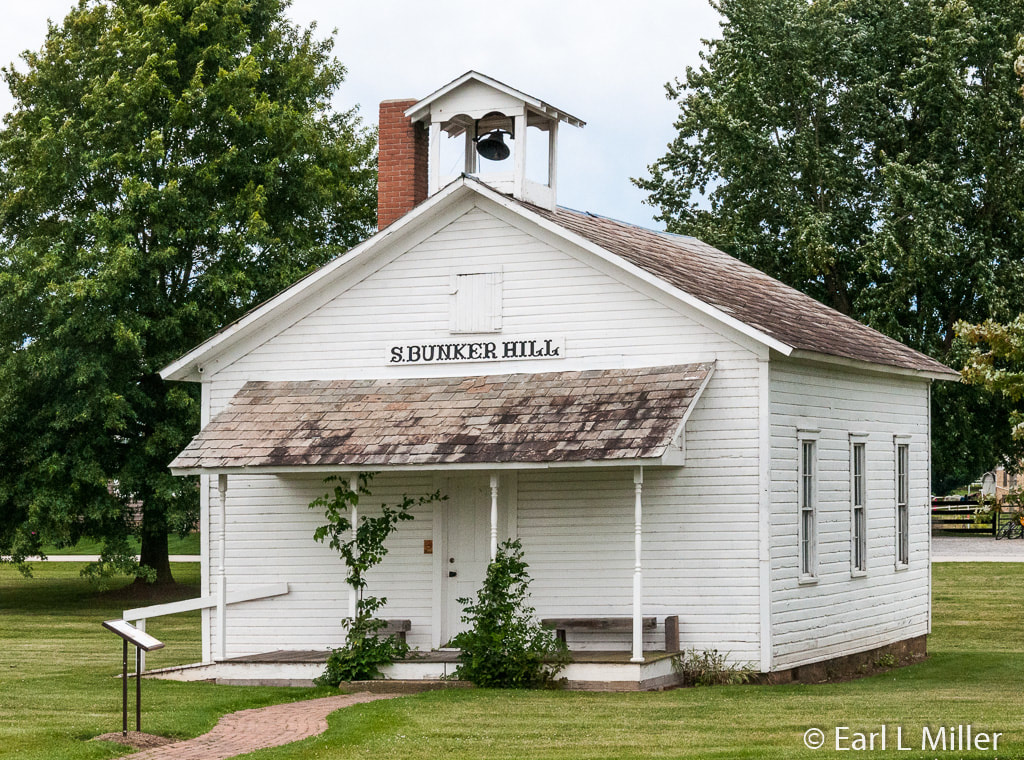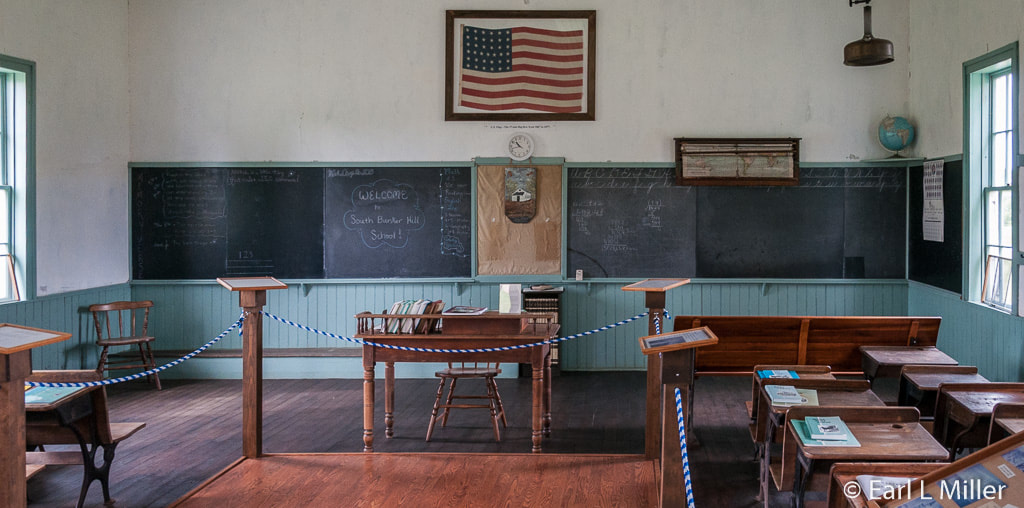Hello Everyone,
A favorite activity for anyone spending time in Northeastern Ohio is a trip to Holmes County, home of the largest Amish population in one locale in the United States. It’s a return to simplicity rather than technology, and family and community instead of hostility and progression.
Driving around the country roads, visitors find large white farmhouses with no attachments to electricity. Colorful peasant style clothing flaps gently from clothes lines. A bicycle or two may line the driveway. A second home for older family members, the Dawdi Haus, is often found next door.
Draft horses tow plows, wagons, and even hay rakes across the landscape. They’re led by the head of the house dressed in his simple white shirt, navy blue pants, and wide brimmed straw hat. His wife, in a solid green or blue dress, her head covered by a white bonnet, cheerfully tends her vegetable garden on the side of the house.
On country roadways, you’ll find Amish black buggies loaded with families or just a couple out for the day. Pulling these loads are Standardbreds. Since most are retired harness racers, they tow the buggies without hesitation. Continuing your drive, watch for one room school rooms and signs inviting visitors to explore shops where quilts are sold, candy made, and well-crafted furniture manufactured.
In towns like Kidron, Berlin, and Mount Hope, hitching posts line spaces at banks, general stores, Lehman Hardware, and cheese factories like Heini’s and Guggisberg Cheese. Attractions also gather attention ranging from theaters, Amish homes to visit, The Farm at Walnut Creek, and scattered museums.
Many make special trips to this area just for their restaurants with their family style broasted chicken, slow cooked beef, and ham dinners. Extensive salad bars come equipped with everything from regular salad ingredients to three bean, marshmallow, and cucumber salads to delicious apple and peanut butters. For those with smaller appetites, salads and sandwiches are available. Of course, it’s essential to save room for all of the specialty and fruit pies for which the Amish are so well known.
WHO ARE THE AMISH?
Amish roots stretch back to the Protestant Reformation during the 1500s in Zurich, Switzerland where they were known as Anabaptists. Whereas Protestants and Catholics believed in baptism of infants, Anabaptists insisted church members should be baptized as adults instead. Due to their insistence that separation between church and state was essential, Anabaptists refused to enter military service. The resentment of European governments to these choices was swift and obvious leading to centuries of major persecution and martyrdom against Anabaptists throughout Switzerland, southern Germany, Austria, the Netherlands, and Moravia.
The Martyrs Mirror, a 1,478 page tome collected by Dutch Mennonite minister Thielman Jansz, resulted from this martyrdom. Jansz worried that his people would forget Jesus’s teaching of simplicity and humility as well as the stories regarding Anabaptist suffering. As a remembrance, he collected tales of martyrs from court records. This book is found today in most Amish homes.
At the Oberhaus Castle prison in Passau, Germany, Anabaptist prisoners wrote 53 hymns about sorrow, loneliness, and imminent death. Throughout the years, other songs joined the collection first published in 1564. Upon its reissuance in 1573, the printing was given the title Ausbund. This Anabaptist hymnal of the Amish contains only words. The music has been passed down orally throughout the generations. Other than the Bible, it's the Amish’s most common worship book.
Menno Simons, a Dutch Catholic priest, had been an Anabaptist sympathizer for many years. In 1536, he publicly joined the peaceful wing of that movement and strove to promote nonviolent Anabaptist churches across northern Europe. He was so influential, that by 1545, some officials linked Anabaptism with his name giving the movement the label “Mennonites.”
Many believe that the Amish came first and that the Mennonites separated from them. The opposite is true. Jakob Ammann, a former Swiss Elder, who had settled in Alsace (France), in 1693, founded the Amish branch of Anabaptism. He sought stringent reforms with more attention to church discipline. He favored communion services twice rather than once a year and believed that in deference to Jesus, members should wash each other’s feet. He was also for increasing the practice of shunning (social avoidance). He believed that the group led by Hans Reist was spiritually lax and the differences between the two memberships were unresolvable.
Ammann excommunicated Reist and his leaders from the church leading to a massive shock wave within the religion. The Mennonites then excommunicated Ammann. After several years passed, Ammann and some of his leaders tried to rejoin the mainstream Mennonite Church in 1699 and again in 1700, but they weren’t allowed. The Mennonites concluded separation was desirable due to the major differences of scripture and traditional interpretations.
Two immigration waves brought the Amish to America after the urging of William Penn in 1682. One occurred in 1727 on the Adventurer. A larger group arrived from the early to the middle 1800s. The first group settled in eastern Pennsylvania, primarily around Lancaster, while the second headed to the Midwest, Ontario, and New York state.
Amish today are found in 30 states and some eastern Canadian provinces with nearly 2/3's of their population living in Ohio, Pennsylvania, and Indiana. They no longer reside in Europe. Their population is growing due to large families and high membership retention rates. It now numbers more than 310,000.
THE BASIC BELIEFS
Within both the Mennonite and Amish religions, there are numerous groups who vary in the type of lifestyle they lead and the technology they accept. While basic religious tenets are the same, other differences are so varied from community to community that it’s almost impossible to generalize. Some of the major sects comprising the Amish are the Swartzentruber Amish, Old Amish, New Order Amish, and Beachy Amish.
New Order Amish share numerous similarities with Old Order Amish. This includes plain dress (sometimes the New Order have more colorful fabrics), using horses and buggies to travel, speaking Pennsylvania Dutch, worshipping at home, banning public electric power at home, and being careful as to what technology they accept. New Order Amish do not own automobiles but are more lenient than the Old Order when it comes to tractors. Homes and barns are similar in appearance for the two groups.
Differences do exist. Some New Order Amish allow phone lines in their home and cell phone usage. Men’s hair and beards are more likely to be shorter. They print their beliefs in pamphlets and are likely to do mission work abroad. Their buggies are more elaborate with rubber tires and decorative molding. New Order Amish ban alcohol and tobacco while some Old Order Amish grow and use this plant. Most, but not all, New Order Amish have Sunday School for adults and children on the “off Sunday” when a district doesn’t hold church. Old Order Amish use the day to visit relatives and other churches or for Bible readings and devotions at home.
Swartzentruber Amish are highly restrictive regarding most technology. For example, they disallow electric lighting on buggies and indoor plumbing in their homes. Their educational curriculum is more basic with reading materials more restrictive. Clothing is heavier and plainer, particularly for women. They are less likely to have close relationships with non-Amish and only ride in automobiles in case of emergencies.
The Beachy Amish are progressive. They separated in 1927 over the issue of strict shunning. They worship in specially constructed buildings instead of homes, are involved with mission work, own automobiles, and have electricity and telephones in their homes. They wear plain clothing including head coverings, believe in foot washing and nonresistance, and tend to have limited formal education though some to go to high school. They hold Sunday school and Bible study groups.
CHURCH
All Amish groups believe their religious faith and their lifestyle are inseparable and interdependent. They strive for eternal life and believe in the literal interpretation of the Bible instruction “be not conformed to this world.” They practice foot washing and hold Holy Communion twice a year. The community rather than the individual is their philosophy’s heartbeat.
Amish settlements are divided into church districts with the membership size depending upon distance. They seldom exceed 40 families. Each has its own set of unwritten rules called the Ordung. Bishops decide which rules should be put to a vote rather than arbitrarily assigning them to their congregation. For new rules to be accepted, they must be agreed upon unanimously by members. The Amish believe that it is through strict enforcement of these dictates that communities are kept together.
Those who are baptized must obey their district’s rules. If they err, they may be shunned for a variety of offenses ranging from morality to using improper technology. Amish may not buy from, sell to, eat with or sleep with a shunned person even if that person is one’s spouse or close relative. Shunning continues until repentance, forgiveness, and restoration to full membership occurs. In some cases, excommunication applies.
Church leaders are bishops, ministers, and deacons. Upon becoming baptized, the men in the congregation must agree to accept the religious roles they are given by the church. All are untrained and unpaid. They are chosen by lot for life. Church hierarchies, as seen in Catholic and Protestant religions, are rejected by the Amish.
Head of the individual church district is the bishop. He administers discipline, ordains new ministers, and baptizes and marries members. The minister is the bishop’s assistant and preaches on Sundays. Sermons are without notes and rehearsals. The deacon collects alms, assists the bishop in conducting discipline, and publishes a list of soon-to-be-married couples.
Amish church takes place on a rotating basis in family homes and barns on alternate Sundays. Usually lasting from three to four hours, singing from the Ausbund hymn book opens and closes the service. After the initial songs, the ministers go to another room to discuss what to preach that day and deliver classes to any baptismal candidates. Ministers preach two sermons. One lasts 20 minutes while the other is for an hour. A set schedule of readings from the Bible and prayers are followed. At the end of preaching, the ministers ask others to confirm, add to, or correct the topics they have covered in their sermon. Men and women sit on benches on opposite sides of the room.
A large wagon goes from one host’s location to the next. It’s filled with backless benches for the service and the meal that follows, dishes, food, and Ausbunds. While each district has a set food menu, the meal varies from community to community.
FAMILIES
The family is the Amish building block with traditional gender roles accepted. Men provide sustenance and are in charge of the spiritual life. Women do domestic tasks, take care of the children, and may perform light farm work. Wives are regarded as subordinate to their husbands.
Children are taught to work at a very early age. By age seven, they are milking cows and working in the fields. Youngsters also assist with household chores such as canning, baking, and gathering wood.
Typically Amish youth are baptized between the ages of 18 and 21, Around age 16, they enter Rumspringa which means “running around.” This is when they socialize with friends on weekends. It’s also when they decide if they will be baptized and join the church or leave the Amish religion. When the Amish enter their mid to late 20's, Rumspringa usually ends in marriage.
SEPARATION OF CHURCH AND STATE
Because the Amish believe in helping themselves and assisting each other’s physical and material needs, they oppose insurance including social security. In 1965, the U.S. Congress exempted them from social security if Amish are employed by other Amish. However, the IRS requires Amish employees working for non-Amish employers to still pay social security.
They must pay all taxes. Some pay school taxes twice if their children attend Amish parochial schools. They don’t hold elected office, prefer not to vote, and refuse to serve in the military. Instead, they are pacifists and conscientious objectors. They don’t receive welfare or government subsidies of any type,
Throughout the ages, during various European and American Wars, they resisted taking part even though it resulted in persecution. They abhor all violence including angry words. Only peaceful solutions are acceptable. Guns are only to be used for hunting.
Because they believe in keeping themselves separate from the world, they live in small communities. The keys to their lifestyle: modesty, simplicity, and humility are consistently and strongly applied to how they adapt to technology and their lifestyle.
FARMING AND BUSINESS
Farming has been a mainstay of their lives with popular crops being corn, wheat, barley, and oats. Milk from Amish dairy cattle is sold to local cheese factories.
The majority of Old Order Amish and the entire Swartzentruber Amish don’t use tractors or other machines in the fields. They rely on draft horses such as Belgians and Percherons to pull plows and other farm equipment.
With their population growing and acreage decreasing, fewer Amish are farmers. Instead, they are turning to other employment. Occupations like carpentry, home and commercial construction, RV building, furniture manufacturing, and the ownership of retail stores and roadside stands are dominant. Others work as auctioneers or create quilts for sale.
They manufacture furniture in a wide range of styles and motifs with Mission and Shaker being two of the most popular. They also manufacture modern, contemporary, arts and crafts, and Queen Anne. Some Amish produce custom kitchen cabinets. Their goods are considered to be of high quality and reasonably priced. Furniture is sold directly and through non-Amish retailers.
How they use their tools depends on the Amish group involved. Some use saws and planes powered by a line shaft system. Diesel generators drive a line shaft that is run beneath the furniture store’s shop. Belts, connecting to machinery, rise from this shaft to provide power. The most progressive groups use hydraulic, pneumatic, and electric power.
THEIR HOMES
Amish farmers produce much of their own food. They rear and butcher chickens, pork, and beef. They grow corn and grain to feed their animals and to sell. Some use the animals they hunt, such as deer, as food sources. Wives grow sizable gardens, fruit trees, and grapevines on their property. They do extensive canning. Almost all use “family cows” as sources of milk.
Telephones and electricity are not used in homes, except for the most liberal Amish like the Beachys, since the Amish believe those technologies connect them to the world through wires. For use in barns or businesses, some use electricity and petrol/diesel power. A few have telephone booths outside of their residences. The use of cell phones is allowed by some. The Amish do not watch television or listen to radios or stereos.
Propane gas is often used to run appliances while various lamp types, including kerosene, provide indoor lighting. Amish housewives use the wringer types of washing machines. These depend on diesel generators. All homes have clotheslines. However, in emergencies, the Amish are sometimes spotted in local laundromats doing small loads.
Most Amish do not allow paintings or photographs of human or animal figures. They believe such things are graven images in violation of the second commandment. That is also the reason why Amish dolls don’t have faces. Non-figurative arts such as handmade quilts are highly valued as long as these products do not constitute vanity. They are viewed in rooms throughout the home.
Calendars featuring the Amish countryside often include people from a distance of that religion. Scenes like those are acceptable to photograph. However, only a few allow close-up shots of themselves. It is essential to ask that person first. If the answer is "No" their statement must be respected.
DRESS
The Amish believe one’s dress must reflect humility and modesty. By dressing uniformly, physical outfits don’t create a false sense of pride. While Amish women make most of their clothes, some outfits are purchased from store racks.
Old Order Amish women wear solid colored dresses with long sleeves and a full skirt, white organdy cape, and an apron. Their hair is worn in a bun on the back of their head. A kapp, which is a white organza prayer covering, covers their hair directly. Bonnets are worn over the kapp. Single women wear black bonnets while married women wear ones that are white. The practice of covering their heads derives from 1 Corinthians 11:5-6.
Men and boys wear dark trousers, suspenders instead of belts, straight-cut coats, and broad-brimmed straw hats. Pants have only interior pockets. One is for a pocket watch since a wrist watch is considered jewelry and not allowed.
Clothes aren’t allowed to have patterns, stripes, or checks. The most common clothing colors are dark blue, green, purple, brown, and black. Shoes are black.
Buttons are used much of the time though some women use straight pins to secure their clothing. Hooks and eyes are used on suits and vests. Men always wear the Mutze, the Sunday dress coat, to church. These coats can’t have collars, pockets, or lapels. Velcro and zippers aren’t permitted.
Men must have full beards in preparation for marriage but that can vary by community. It depends on which Amish sect they belong to as to whether or not they can shave their beards. They aren’t allowed to have mustaches since those were worn by 19th century Prussian military.
TRANSPORTATION
Which sect an Amish person belongs to determines the degree that cars are avoided. The Amish reject car ownership because they believe cars make it easier to drive away from home and provide easier access to cities. Many think the use of automobiles would pull their communities apart. Most Amish ride with English (non Amish) friends and neighbors or hire Amish taxis (driven by non Amish) for longer trips. Except for the New Order, they don’t travel on airplanes but can take buses, boats, and trains.
Amish buggies, usually colored black or grey, range in cost from $1500 to $10,000 depending upon options such as lights, brakes, propane gas heat, windshield wipers, and upholstered seats. Some of the stricter groups have open fronts or open tops exposing riders to the elements. Most display a Slow Moving Vehicle Triangle on the vehicle’s rear except for the Swartzentruber Amish who don’t. That group also doesn’t have blinking turn signals on their buggies.
Since buggies travel five to eight miles per hour, it is important to keep this in mind when driving on country roads. Be careful not to get too close to the rear of one when it stops since the horse may back up. Amish horses have a range of 15 to 20 miles before rest and refreshment.
Larger settlements usually have one buggy maker while smaller communities order their carriages from those in other settlements. It’s common for families to have multiple buggies. Many Amish boys have one by age sixteen. Girls usually ride with their family members.
LANGUAGE
The Amish speak three languages. They learn English when they enter school and use that when talking to non Amish. They speak Pennsylvania Dutch (a form of German) at home. Many conduct church services in High German.
EDUCATION
The Amish believe that an eighth grade education is adequate to meet the needs of their society. Church members are hesitant about such subjects as sex and science being taught to their children in high school. Concentration is on reading, writing, arithmetic, and religion. Amish history, farming techniques, and homemaking skills are also taught.
Amish youngsters attend parochial school for first grade at age six or seven. Some attend preschool a few days a week or are prepared by their parents. Home schooling is rare.
In 1972, the United States Supreme Court decided the Amish did not have to attend school after eighth grade which is normally age 14. In those states requiring attendance until age 15, Amish children attend vocational classes until reaching that age. They also typically receive a few hours of classroom instruction one day a week.
Amish schools typically consist of one or two classrooms consisting of between 25 and 35 students. Older Amish children assist younger ones while teachers work with a particular grade level at one time. Mennonite youngsters and some of the most liberal Amish sects do attend high school. Some even go to such higher educational institutions as Goshen College in Indiana.
A board, typically consisting of three male parents, is responsible for administering the school. Typically teachers are female and young although some are male teachers. Having non Amish teachers in Amish schools is the rarest situation.
THE AMISH AND MENNONITE CULTURAL CENTER
To learn about the Amish way of life, visitors should stop at Behalt: The Amish and Mennonite Heritage Center. Originally called the Mennonite Information Center, it was established in 1981 as a way to preserve and provide knowledge about the Amish and Mennonite faith, cultures, and lifestyles. It was renamed in 2002 to more accurately reflect the community and mission.
The current building was constructed in 1989 to present the Behalt Cyclorama and provide more space for the other exhibits, bookstore, and gift shop. Today it also houses a library. Precious items are kept in a vault depending upon their monetary value, age, or fragile state.
A select number of items can be viewed through glass windows. Among the Bibles, dating mainly from the 1600's to 1853, is a 1531 Froschauer Bible based on Luther’s translation. Another gem is a copy of a 1564 Ausbund, hymn book. It is the oldest hymn book in the world. Several editions of this hymnal are displayed in a center console with an information plate on each edition. Martyr's Mirror, a Dutch first edition from 1600 is also found. A complete collection of Budget newspapers, started in Sugarcreek, Ohio in 1890, are displayed besides typeface, advertising slides, and other materials associated with early printing. The Budget is still published.
Take time to watch the 15-minute video. It provides insight into the Amish beliefs and lifestyles and relates the differences between them and Mennonites.
Behalt, one of four cycloramas in North America, is a 10 foot by 265 foot circular mural presenting the history of the Amish, Hutterite, and Mennonite people. It starts with the acceptance of the Roman Catholic church, includes the Anabaptist beginnings in Zurich, Switzerland in 1525, continues with their arrival in Pennsylvania, and presents modern events such as barn raisings. Its title means “Remember.”
In a 30-minute presentation, your guide points out by laser beam the various events depicted as well as some of the more than 1200 historical people including such figures as Menlo Simon, Jakob Ammann, Hans Reist, and William Penn. Since the mural is copywritten, no photographs are allowed.
Behalt has the distinction of being the work of one man, Heinz Gaugel, who did original research for ten years then took four more years to complete charcoal sketches and paint oils-on-canvas. He was a self-taught artist, who was born in southern Germany. He began his artistic career when he moved to Canada in 1951. His work included oils on canvas, ceramics, stained glass, fresco, sgraffito, and other techniques. Gaugel was fascinated with the Amish because they spoke a similar dialect to his own and because of his strong belief in nonviolence.
He arrived in Holmes County, Ohio in 1962 searching for glazed brick for a mural he was working on in Ontario, Canada, When he encountered the Amish culture, he purchased a farm in 1972 to work on various area projects.
One day in 1978, an Amish blacksmith advised Gaugel that he wished there was one place tourists could go to learn about the way the Anabaptists lived. Gaugel saw that as an opportunity and started working the next day on creating a cyclorama.
The Mennonite Information Center purchased the painting in 1988 when 100 feet of the mural had been completed. They built a special Mural Hall where Gaugel could work. In March 1989, the mural was moved into the building. Visitors watched him paint until October 1992 when he signed his name on his completed work. He produced other artwork at the Center until his death during the winter of 2000.
After completing Behalt, Gaugel created in sgraffito his artwork “Immigrants Arrival in the New World.” Sgraffito is a technique in which layers of contrasting colored plaster are applied to a surface. The design occurs by scratching to produce the outline drawing. This technique was used in Germany in the 13th century but seldom seen in North America. Located on the exterior wall of the Mural Hall, the scene depicts Swiss and German immigrants ready to pursue lives in a new land.
Inside the room housing Behalt, visitors see a wooden chair that Jonas Stutzman built for Jesus. He predicted in a booklet that Jesus would return to earth in 1853 and warned all to repent. He made the chair much larger than an ordinary one. When Stutzman arrived at Walnut Creek, Ohio in 1809, he was the first Amishman in the eastern portion of Holmes County.
Be sure to visit their extensive bookstore. It carries books on a wide variety of subjects ranging from cooking and Amish life to history. Our guide at the center, Lester Beachy, a published author, sold us an autographed copy of his book Our Amish Values.
Your tour at Behalt visits the barn illustrating how a barn raising occurs. The Amish pay workmen to construct the barn when it is first built. However, if a mishap, like a fire, occurs the community draws together in one afternoon to erect the structure. Planning for the event can take close to two weeks since enough timbers and pins have to be prepared before the raising begins.
Inside the barn is a Conestoga wagon that belonged to Amish settlers from Pennsylvania. Due to the wagon’s narrow bed, it carried only their possessions. Members of the family walked beside it or in front of the horse. You will also see two Amish buggies displayed. We learned the Old Order Amish buggies have hard rubber instead of steel wheels. New Order Amish have sliding doors, lights, and storm fronts (bumpers) on their buggies.
You will also enter the one-room 1857 South Bunker Hill School that served Holmes County until 1951. English and Amish youngsters attended school together until that year. The building was moved to the Behalt grounds in 2003 and restored. It is set up as if it were open with desks, stove, and a rope to ring the school’s bell.
DETAILS:
Behalt is located at 5798 County Road 77 near Berlin, Ohio. The telephone number is (330) 893-3192. It is open Monday through Saturday but never on Sunday. From March through November, hours are 9:00 a.m. to 5:00 p.m. and from December through February from 9:30 a.m. to 4:30 p.m. While the museum, video, and gift shop are free, the Behalt tour costs $8.75 for adults and $4.25 for children ages 12 and under.
FREE NOTIFICATION LIST:
To be notified when an article is posted, join the free notification list. This can be done by going to the Contact page to fill out the form. We do insist that you provide your city and state as we like to know where our readers live. Personal information and email addresses are never given out.
A favorite activity for anyone spending time in Northeastern Ohio is a trip to Holmes County, home of the largest Amish population in one locale in the United States. It’s a return to simplicity rather than technology, and family and community instead of hostility and progression.
Driving around the country roads, visitors find large white farmhouses with no attachments to electricity. Colorful peasant style clothing flaps gently from clothes lines. A bicycle or two may line the driveway. A second home for older family members, the Dawdi Haus, is often found next door.
Draft horses tow plows, wagons, and even hay rakes across the landscape. They’re led by the head of the house dressed in his simple white shirt, navy blue pants, and wide brimmed straw hat. His wife, in a solid green or blue dress, her head covered by a white bonnet, cheerfully tends her vegetable garden on the side of the house.
On country roadways, you’ll find Amish black buggies loaded with families or just a couple out for the day. Pulling these loads are Standardbreds. Since most are retired harness racers, they tow the buggies without hesitation. Continuing your drive, watch for one room school rooms and signs inviting visitors to explore shops where quilts are sold, candy made, and well-crafted furniture manufactured.
In towns like Kidron, Berlin, and Mount Hope, hitching posts line spaces at banks, general stores, Lehman Hardware, and cheese factories like Heini’s and Guggisberg Cheese. Attractions also gather attention ranging from theaters, Amish homes to visit, The Farm at Walnut Creek, and scattered museums.
Many make special trips to this area just for their restaurants with their family style broasted chicken, slow cooked beef, and ham dinners. Extensive salad bars come equipped with everything from regular salad ingredients to three bean, marshmallow, and cucumber salads to delicious apple and peanut butters. For those with smaller appetites, salads and sandwiches are available. Of course, it’s essential to save room for all of the specialty and fruit pies for which the Amish are so well known.
WHO ARE THE AMISH?
Amish roots stretch back to the Protestant Reformation during the 1500s in Zurich, Switzerland where they were known as Anabaptists. Whereas Protestants and Catholics believed in baptism of infants, Anabaptists insisted church members should be baptized as adults instead. Due to their insistence that separation between church and state was essential, Anabaptists refused to enter military service. The resentment of European governments to these choices was swift and obvious leading to centuries of major persecution and martyrdom against Anabaptists throughout Switzerland, southern Germany, Austria, the Netherlands, and Moravia.
The Martyrs Mirror, a 1,478 page tome collected by Dutch Mennonite minister Thielman Jansz, resulted from this martyrdom. Jansz worried that his people would forget Jesus’s teaching of simplicity and humility as well as the stories regarding Anabaptist suffering. As a remembrance, he collected tales of martyrs from court records. This book is found today in most Amish homes.
At the Oberhaus Castle prison in Passau, Germany, Anabaptist prisoners wrote 53 hymns about sorrow, loneliness, and imminent death. Throughout the years, other songs joined the collection first published in 1564. Upon its reissuance in 1573, the printing was given the title Ausbund. This Anabaptist hymnal of the Amish contains only words. The music has been passed down orally throughout the generations. Other than the Bible, it's the Amish’s most common worship book.
Menno Simons, a Dutch Catholic priest, had been an Anabaptist sympathizer for many years. In 1536, he publicly joined the peaceful wing of that movement and strove to promote nonviolent Anabaptist churches across northern Europe. He was so influential, that by 1545, some officials linked Anabaptism with his name giving the movement the label “Mennonites.”
Many believe that the Amish came first and that the Mennonites separated from them. The opposite is true. Jakob Ammann, a former Swiss Elder, who had settled in Alsace (France), in 1693, founded the Amish branch of Anabaptism. He sought stringent reforms with more attention to church discipline. He favored communion services twice rather than once a year and believed that in deference to Jesus, members should wash each other’s feet. He was also for increasing the practice of shunning (social avoidance). He believed that the group led by Hans Reist was spiritually lax and the differences between the two memberships were unresolvable.
Ammann excommunicated Reist and his leaders from the church leading to a massive shock wave within the religion. The Mennonites then excommunicated Ammann. After several years passed, Ammann and some of his leaders tried to rejoin the mainstream Mennonite Church in 1699 and again in 1700, but they weren’t allowed. The Mennonites concluded separation was desirable due to the major differences of scripture and traditional interpretations.
Two immigration waves brought the Amish to America after the urging of William Penn in 1682. One occurred in 1727 on the Adventurer. A larger group arrived from the early to the middle 1800s. The first group settled in eastern Pennsylvania, primarily around Lancaster, while the second headed to the Midwest, Ontario, and New York state.
Amish today are found in 30 states and some eastern Canadian provinces with nearly 2/3's of their population living in Ohio, Pennsylvania, and Indiana. They no longer reside in Europe. Their population is growing due to large families and high membership retention rates. It now numbers more than 310,000.
THE BASIC BELIEFS
Within both the Mennonite and Amish religions, there are numerous groups who vary in the type of lifestyle they lead and the technology they accept. While basic religious tenets are the same, other differences are so varied from community to community that it’s almost impossible to generalize. Some of the major sects comprising the Amish are the Swartzentruber Amish, Old Amish, New Order Amish, and Beachy Amish.
New Order Amish share numerous similarities with Old Order Amish. This includes plain dress (sometimes the New Order have more colorful fabrics), using horses and buggies to travel, speaking Pennsylvania Dutch, worshipping at home, banning public electric power at home, and being careful as to what technology they accept. New Order Amish do not own automobiles but are more lenient than the Old Order when it comes to tractors. Homes and barns are similar in appearance for the two groups.
Differences do exist. Some New Order Amish allow phone lines in their home and cell phone usage. Men’s hair and beards are more likely to be shorter. They print their beliefs in pamphlets and are likely to do mission work abroad. Their buggies are more elaborate with rubber tires and decorative molding. New Order Amish ban alcohol and tobacco while some Old Order Amish grow and use this plant. Most, but not all, New Order Amish have Sunday School for adults and children on the “off Sunday” when a district doesn’t hold church. Old Order Amish use the day to visit relatives and other churches or for Bible readings and devotions at home.
Swartzentruber Amish are highly restrictive regarding most technology. For example, they disallow electric lighting on buggies and indoor plumbing in their homes. Their educational curriculum is more basic with reading materials more restrictive. Clothing is heavier and plainer, particularly for women. They are less likely to have close relationships with non-Amish and only ride in automobiles in case of emergencies.
The Beachy Amish are progressive. They separated in 1927 over the issue of strict shunning. They worship in specially constructed buildings instead of homes, are involved with mission work, own automobiles, and have electricity and telephones in their homes. They wear plain clothing including head coverings, believe in foot washing and nonresistance, and tend to have limited formal education though some to go to high school. They hold Sunday school and Bible study groups.
CHURCH
All Amish groups believe their religious faith and their lifestyle are inseparable and interdependent. They strive for eternal life and believe in the literal interpretation of the Bible instruction “be not conformed to this world.” They practice foot washing and hold Holy Communion twice a year. The community rather than the individual is their philosophy’s heartbeat.
Amish settlements are divided into church districts with the membership size depending upon distance. They seldom exceed 40 families. Each has its own set of unwritten rules called the Ordung. Bishops decide which rules should be put to a vote rather than arbitrarily assigning them to their congregation. For new rules to be accepted, they must be agreed upon unanimously by members. The Amish believe that it is through strict enforcement of these dictates that communities are kept together.
Those who are baptized must obey their district’s rules. If they err, they may be shunned for a variety of offenses ranging from morality to using improper technology. Amish may not buy from, sell to, eat with or sleep with a shunned person even if that person is one’s spouse or close relative. Shunning continues until repentance, forgiveness, and restoration to full membership occurs. In some cases, excommunication applies.
Church leaders are bishops, ministers, and deacons. Upon becoming baptized, the men in the congregation must agree to accept the religious roles they are given by the church. All are untrained and unpaid. They are chosen by lot for life. Church hierarchies, as seen in Catholic and Protestant religions, are rejected by the Amish.
Head of the individual church district is the bishop. He administers discipline, ordains new ministers, and baptizes and marries members. The minister is the bishop’s assistant and preaches on Sundays. Sermons are without notes and rehearsals. The deacon collects alms, assists the bishop in conducting discipline, and publishes a list of soon-to-be-married couples.
Amish church takes place on a rotating basis in family homes and barns on alternate Sundays. Usually lasting from three to four hours, singing from the Ausbund hymn book opens and closes the service. After the initial songs, the ministers go to another room to discuss what to preach that day and deliver classes to any baptismal candidates. Ministers preach two sermons. One lasts 20 minutes while the other is for an hour. A set schedule of readings from the Bible and prayers are followed. At the end of preaching, the ministers ask others to confirm, add to, or correct the topics they have covered in their sermon. Men and women sit on benches on opposite sides of the room.
A large wagon goes from one host’s location to the next. It’s filled with backless benches for the service and the meal that follows, dishes, food, and Ausbunds. While each district has a set food menu, the meal varies from community to community.
FAMILIES
The family is the Amish building block with traditional gender roles accepted. Men provide sustenance and are in charge of the spiritual life. Women do domestic tasks, take care of the children, and may perform light farm work. Wives are regarded as subordinate to their husbands.
Children are taught to work at a very early age. By age seven, they are milking cows and working in the fields. Youngsters also assist with household chores such as canning, baking, and gathering wood.
Typically Amish youth are baptized between the ages of 18 and 21, Around age 16, they enter Rumspringa which means “running around.” This is when they socialize with friends on weekends. It’s also when they decide if they will be baptized and join the church or leave the Amish religion. When the Amish enter their mid to late 20's, Rumspringa usually ends in marriage.
SEPARATION OF CHURCH AND STATE
Because the Amish believe in helping themselves and assisting each other’s physical and material needs, they oppose insurance including social security. In 1965, the U.S. Congress exempted them from social security if Amish are employed by other Amish. However, the IRS requires Amish employees working for non-Amish employers to still pay social security.
They must pay all taxes. Some pay school taxes twice if their children attend Amish parochial schools. They don’t hold elected office, prefer not to vote, and refuse to serve in the military. Instead, they are pacifists and conscientious objectors. They don’t receive welfare or government subsidies of any type,
Throughout the ages, during various European and American Wars, they resisted taking part even though it resulted in persecution. They abhor all violence including angry words. Only peaceful solutions are acceptable. Guns are only to be used for hunting.
Because they believe in keeping themselves separate from the world, they live in small communities. The keys to their lifestyle: modesty, simplicity, and humility are consistently and strongly applied to how they adapt to technology and their lifestyle.
FARMING AND BUSINESS
Farming has been a mainstay of their lives with popular crops being corn, wheat, barley, and oats. Milk from Amish dairy cattle is sold to local cheese factories.
The majority of Old Order Amish and the entire Swartzentruber Amish don’t use tractors or other machines in the fields. They rely on draft horses such as Belgians and Percherons to pull plows and other farm equipment.
With their population growing and acreage decreasing, fewer Amish are farmers. Instead, they are turning to other employment. Occupations like carpentry, home and commercial construction, RV building, furniture manufacturing, and the ownership of retail stores and roadside stands are dominant. Others work as auctioneers or create quilts for sale.
They manufacture furniture in a wide range of styles and motifs with Mission and Shaker being two of the most popular. They also manufacture modern, contemporary, arts and crafts, and Queen Anne. Some Amish produce custom kitchen cabinets. Their goods are considered to be of high quality and reasonably priced. Furniture is sold directly and through non-Amish retailers.
How they use their tools depends on the Amish group involved. Some use saws and planes powered by a line shaft system. Diesel generators drive a line shaft that is run beneath the furniture store’s shop. Belts, connecting to machinery, rise from this shaft to provide power. The most progressive groups use hydraulic, pneumatic, and electric power.
THEIR HOMES
Amish farmers produce much of their own food. They rear and butcher chickens, pork, and beef. They grow corn and grain to feed their animals and to sell. Some use the animals they hunt, such as deer, as food sources. Wives grow sizable gardens, fruit trees, and grapevines on their property. They do extensive canning. Almost all use “family cows” as sources of milk.
Telephones and electricity are not used in homes, except for the most liberal Amish like the Beachys, since the Amish believe those technologies connect them to the world through wires. For use in barns or businesses, some use electricity and petrol/diesel power. A few have telephone booths outside of their residences. The use of cell phones is allowed by some. The Amish do not watch television or listen to radios or stereos.
Propane gas is often used to run appliances while various lamp types, including kerosene, provide indoor lighting. Amish housewives use the wringer types of washing machines. These depend on diesel generators. All homes have clotheslines. However, in emergencies, the Amish are sometimes spotted in local laundromats doing small loads.
Most Amish do not allow paintings or photographs of human or animal figures. They believe such things are graven images in violation of the second commandment. That is also the reason why Amish dolls don’t have faces. Non-figurative arts such as handmade quilts are highly valued as long as these products do not constitute vanity. They are viewed in rooms throughout the home.
Calendars featuring the Amish countryside often include people from a distance of that religion. Scenes like those are acceptable to photograph. However, only a few allow close-up shots of themselves. It is essential to ask that person first. If the answer is "No" their statement must be respected.
DRESS
The Amish believe one’s dress must reflect humility and modesty. By dressing uniformly, physical outfits don’t create a false sense of pride. While Amish women make most of their clothes, some outfits are purchased from store racks.
Old Order Amish women wear solid colored dresses with long sleeves and a full skirt, white organdy cape, and an apron. Their hair is worn in a bun on the back of their head. A kapp, which is a white organza prayer covering, covers their hair directly. Bonnets are worn over the kapp. Single women wear black bonnets while married women wear ones that are white. The practice of covering their heads derives from 1 Corinthians 11:5-6.
Men and boys wear dark trousers, suspenders instead of belts, straight-cut coats, and broad-brimmed straw hats. Pants have only interior pockets. One is for a pocket watch since a wrist watch is considered jewelry and not allowed.
Clothes aren’t allowed to have patterns, stripes, or checks. The most common clothing colors are dark blue, green, purple, brown, and black. Shoes are black.
Buttons are used much of the time though some women use straight pins to secure their clothing. Hooks and eyes are used on suits and vests. Men always wear the Mutze, the Sunday dress coat, to church. These coats can’t have collars, pockets, or lapels. Velcro and zippers aren’t permitted.
Men must have full beards in preparation for marriage but that can vary by community. It depends on which Amish sect they belong to as to whether or not they can shave their beards. They aren’t allowed to have mustaches since those were worn by 19th century Prussian military.
TRANSPORTATION
Which sect an Amish person belongs to determines the degree that cars are avoided. The Amish reject car ownership because they believe cars make it easier to drive away from home and provide easier access to cities. Many think the use of automobiles would pull their communities apart. Most Amish ride with English (non Amish) friends and neighbors or hire Amish taxis (driven by non Amish) for longer trips. Except for the New Order, they don’t travel on airplanes but can take buses, boats, and trains.
Amish buggies, usually colored black or grey, range in cost from $1500 to $10,000 depending upon options such as lights, brakes, propane gas heat, windshield wipers, and upholstered seats. Some of the stricter groups have open fronts or open tops exposing riders to the elements. Most display a Slow Moving Vehicle Triangle on the vehicle’s rear except for the Swartzentruber Amish who don’t. That group also doesn’t have blinking turn signals on their buggies.
Since buggies travel five to eight miles per hour, it is important to keep this in mind when driving on country roads. Be careful not to get too close to the rear of one when it stops since the horse may back up. Amish horses have a range of 15 to 20 miles before rest and refreshment.
Larger settlements usually have one buggy maker while smaller communities order their carriages from those in other settlements. It’s common for families to have multiple buggies. Many Amish boys have one by age sixteen. Girls usually ride with their family members.
LANGUAGE
The Amish speak three languages. They learn English when they enter school and use that when talking to non Amish. They speak Pennsylvania Dutch (a form of German) at home. Many conduct church services in High German.
EDUCATION
The Amish believe that an eighth grade education is adequate to meet the needs of their society. Church members are hesitant about such subjects as sex and science being taught to their children in high school. Concentration is on reading, writing, arithmetic, and religion. Amish history, farming techniques, and homemaking skills are also taught.
Amish youngsters attend parochial school for first grade at age six or seven. Some attend preschool a few days a week or are prepared by their parents. Home schooling is rare.
In 1972, the United States Supreme Court decided the Amish did not have to attend school after eighth grade which is normally age 14. In those states requiring attendance until age 15, Amish children attend vocational classes until reaching that age. They also typically receive a few hours of classroom instruction one day a week.
Amish schools typically consist of one or two classrooms consisting of between 25 and 35 students. Older Amish children assist younger ones while teachers work with a particular grade level at one time. Mennonite youngsters and some of the most liberal Amish sects do attend high school. Some even go to such higher educational institutions as Goshen College in Indiana.
A board, typically consisting of three male parents, is responsible for administering the school. Typically teachers are female and young although some are male teachers. Having non Amish teachers in Amish schools is the rarest situation.
THE AMISH AND MENNONITE CULTURAL CENTER
To learn about the Amish way of life, visitors should stop at Behalt: The Amish and Mennonite Heritage Center. Originally called the Mennonite Information Center, it was established in 1981 as a way to preserve and provide knowledge about the Amish and Mennonite faith, cultures, and lifestyles. It was renamed in 2002 to more accurately reflect the community and mission.
The current building was constructed in 1989 to present the Behalt Cyclorama and provide more space for the other exhibits, bookstore, and gift shop. Today it also houses a library. Precious items are kept in a vault depending upon their monetary value, age, or fragile state.
A select number of items can be viewed through glass windows. Among the Bibles, dating mainly from the 1600's to 1853, is a 1531 Froschauer Bible based on Luther’s translation. Another gem is a copy of a 1564 Ausbund, hymn book. It is the oldest hymn book in the world. Several editions of this hymnal are displayed in a center console with an information plate on each edition. Martyr's Mirror, a Dutch first edition from 1600 is also found. A complete collection of Budget newspapers, started in Sugarcreek, Ohio in 1890, are displayed besides typeface, advertising slides, and other materials associated with early printing. The Budget is still published.
Take time to watch the 15-minute video. It provides insight into the Amish beliefs and lifestyles and relates the differences between them and Mennonites.
Behalt, one of four cycloramas in North America, is a 10 foot by 265 foot circular mural presenting the history of the Amish, Hutterite, and Mennonite people. It starts with the acceptance of the Roman Catholic church, includes the Anabaptist beginnings in Zurich, Switzerland in 1525, continues with their arrival in Pennsylvania, and presents modern events such as barn raisings. Its title means “Remember.”
In a 30-minute presentation, your guide points out by laser beam the various events depicted as well as some of the more than 1200 historical people including such figures as Menlo Simon, Jakob Ammann, Hans Reist, and William Penn. Since the mural is copywritten, no photographs are allowed.
Behalt has the distinction of being the work of one man, Heinz Gaugel, who did original research for ten years then took four more years to complete charcoal sketches and paint oils-on-canvas. He was a self-taught artist, who was born in southern Germany. He began his artistic career when he moved to Canada in 1951. His work included oils on canvas, ceramics, stained glass, fresco, sgraffito, and other techniques. Gaugel was fascinated with the Amish because they spoke a similar dialect to his own and because of his strong belief in nonviolence.
He arrived in Holmes County, Ohio in 1962 searching for glazed brick for a mural he was working on in Ontario, Canada, When he encountered the Amish culture, he purchased a farm in 1972 to work on various area projects.
One day in 1978, an Amish blacksmith advised Gaugel that he wished there was one place tourists could go to learn about the way the Anabaptists lived. Gaugel saw that as an opportunity and started working the next day on creating a cyclorama.
The Mennonite Information Center purchased the painting in 1988 when 100 feet of the mural had been completed. They built a special Mural Hall where Gaugel could work. In March 1989, the mural was moved into the building. Visitors watched him paint until October 1992 when he signed his name on his completed work. He produced other artwork at the Center until his death during the winter of 2000.
After completing Behalt, Gaugel created in sgraffito his artwork “Immigrants Arrival in the New World.” Sgraffito is a technique in which layers of contrasting colored plaster are applied to a surface. The design occurs by scratching to produce the outline drawing. This technique was used in Germany in the 13th century but seldom seen in North America. Located on the exterior wall of the Mural Hall, the scene depicts Swiss and German immigrants ready to pursue lives in a new land.
Inside the room housing Behalt, visitors see a wooden chair that Jonas Stutzman built for Jesus. He predicted in a booklet that Jesus would return to earth in 1853 and warned all to repent. He made the chair much larger than an ordinary one. When Stutzman arrived at Walnut Creek, Ohio in 1809, he was the first Amishman in the eastern portion of Holmes County.
Be sure to visit their extensive bookstore. It carries books on a wide variety of subjects ranging from cooking and Amish life to history. Our guide at the center, Lester Beachy, a published author, sold us an autographed copy of his book Our Amish Values.
Your tour at Behalt visits the barn illustrating how a barn raising occurs. The Amish pay workmen to construct the barn when it is first built. However, if a mishap, like a fire, occurs the community draws together in one afternoon to erect the structure. Planning for the event can take close to two weeks since enough timbers and pins have to be prepared before the raising begins.
Inside the barn is a Conestoga wagon that belonged to Amish settlers from Pennsylvania. Due to the wagon’s narrow bed, it carried only their possessions. Members of the family walked beside it or in front of the horse. You will also see two Amish buggies displayed. We learned the Old Order Amish buggies have hard rubber instead of steel wheels. New Order Amish have sliding doors, lights, and storm fronts (bumpers) on their buggies.
You will also enter the one-room 1857 South Bunker Hill School that served Holmes County until 1951. English and Amish youngsters attended school together until that year. The building was moved to the Behalt grounds in 2003 and restored. It is set up as if it were open with desks, stove, and a rope to ring the school’s bell.
DETAILS:
Behalt is located at 5798 County Road 77 near Berlin, Ohio. The telephone number is (330) 893-3192. It is open Monday through Saturday but never on Sunday. From March through November, hours are 9:00 a.m. to 5:00 p.m. and from December through February from 9:30 a.m. to 4:30 p.m. While the museum, video, and gift shop are free, the Behalt tour costs $8.75 for adults and $4.25 for children ages 12 and under.
FREE NOTIFICATION LIST:
To be notified when an article is posted, join the free notification list. This can be done by going to the Contact page to fill out the form. We do insist that you provide your city and state as we like to know where our readers live. Personal information and email addresses are never given out.
Amish Farm Complete with Dawdi Haus
Typical Amish Laundry
Grazing Time in the Field
Hay Rake Out in the Field
Amish Surrey on a Country Road
Standardbred Passing a Farm
So Many Places to Head for in Amish Country
Passing an Amish Country Store
Another Look at an Amish Farm
A Modern Amish Home with Solar Power
Sometimes Lots of Amish Buggies Means A Line of Traffic
Amishmen Out for a Ride
Amish Parade
Another Look at an Amish Surrey and One of Their Incredible Horses
Exterior of The Amish and Mennonite Cultural Center
"Immigrants Arrival in the New World" by Heinz Gaugel
Froschauer Bible Dated 1531
An Exhibit with Information on the Ausbund
Lester Beachy Holding His Book Our Amish Values
Amish Barn at the Center
The Barn's Conestoga Wagon
One of the Barn's Two Buggies
Amish One Room Schoolhouse - S. Bunker Hill
Interior of S. Bunker Hill Schoolhouse
